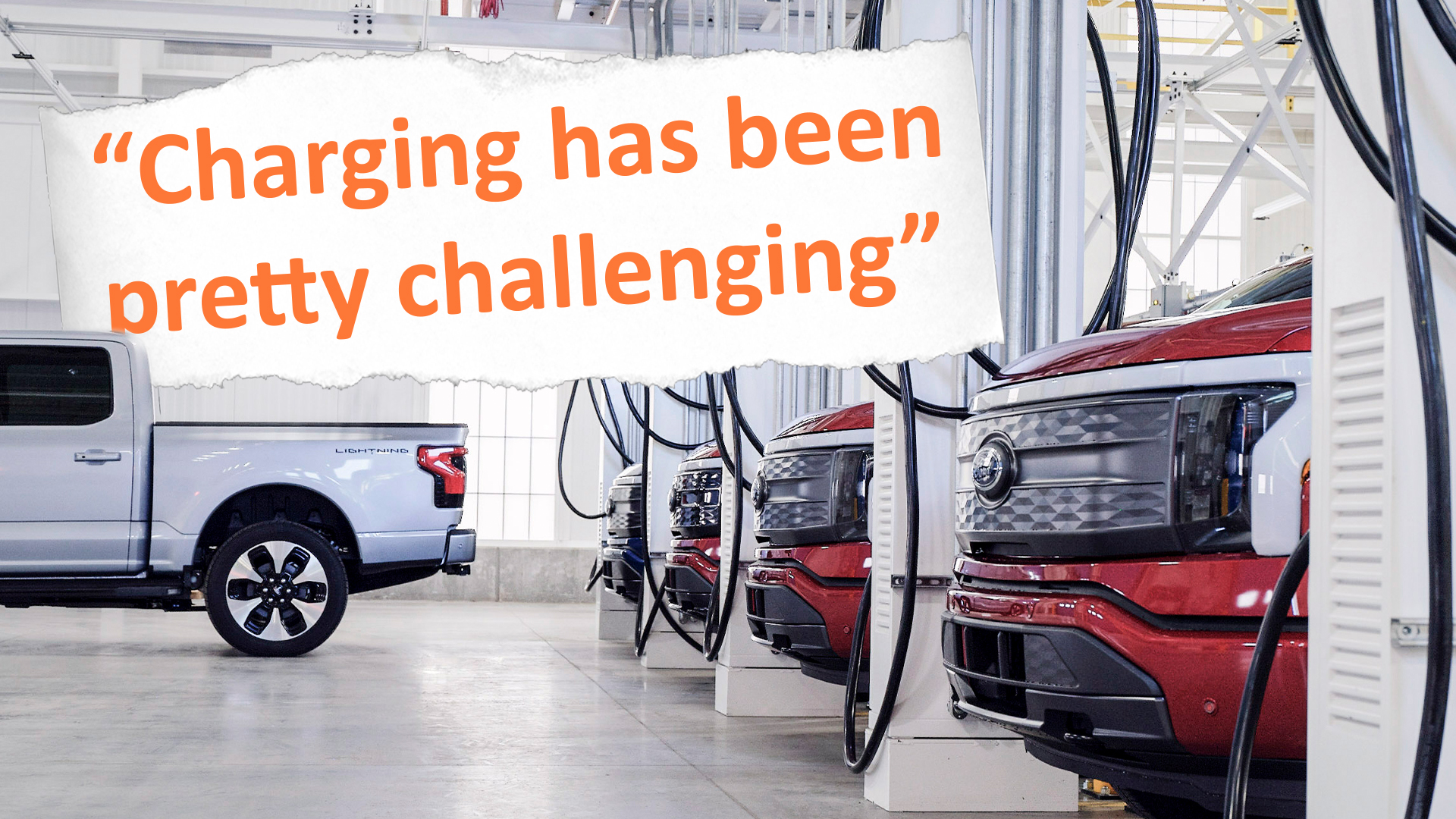

There’s no denying that Ford is proud of all the work that went into developing the F-150 Lightning. From Chief Engineer Linda Zhang’s first-hand account of its development to CEO Jim Farley’s tit-for-tat battle with Tesla CEO Elon Musk over its utility versus the Cybertruck, there’s a lot to be said about Ford’s emotional investment into electrifying America’s best-selling pickup.
Recently, Farley decided to take the Lightning on a road trip on Route 66. The idea was to take on more rural routes in a truck—a truck “for real people who do real work,” according to Farley. And as it turns out, the CEO’s experiment was a real eye opener about how real people in the real world drive their pickups, and what it would take to live with Ford’s newest electrified product in a less-populated area.
“Charging has been pretty challenging,” Farley said during a short video posted on Twitter. “It was a really good reality check of the challenges our customers go through, and the importance of fast-charging.”
Farley was specifically referring to his recent charging experience where he had to use a “low-speed” charger at a popular charging location near the Harris Ranch Inn in Coalinga, California.
Specifically, Farley chose a lower speed charger because it was the first available one he was able to plug into the F-150, due to all of the fast chargers being occupied. The truck spent 40 minutes at the station only to receive a 40% charge. As one might imagine, that isn’t ideal for someone taking a road trip on one of America’s most well-known tourist highways.
EV chargers are often referred to by their “levels.” The slowest chargers are Level 1 and powered off 120-volt circuits like most household outlets. These chargers typically output as high as 2.4 kilowatts, which equate to around 3-5 miles of range per hour. Level 2 chargers can output up to 80 amps at 240 volts, though most common Level 2 chargers—also called destination chargers—will typically output between 6 kW and 19.2 kW of juice. Level 3 chargers are typically what most people think about when taking an EV on a road trip. These DC fast chargers can output up to a whopping 350 kW, which is enough to charge the Lightning at its maximum rate of 150 kW from 15% to 80% in about 36 minutes.
“[Baker, California] was our first 350-kilowatt charger,” Farley said while stopping at an Electrify America charging station later in the trip. “It’s kind of exciting to get all of these speedy electrons in the battery of the Lightning because we’ve only had the slow speed charging. So this is very exciting for us.”
Despite Route 66 being fairly rural in some areas, it’s actually pretty well populated by EV chargers. In fact, road trippers previously plotted out exactly which chargers to stop at when traveling from Chicago to California via the historic highway years ago, and the infrastructure has only improved since then. But, as Farley quickly found out, it’s still not where it needs to be in order to have painless charging—especially for vehicles using the CCS standard.
Ford became the first automaker to announce the switchover from CCS to Tesla’s North American Charging Standard (NACS) back in May. That announcement jumpstarted several other automakers (General Motors, Rivian, Volvo, Polestar, Mercedes-Benz, Nissan, and others) to also announce commitments to switch over to Tesla’s plug. It wasn’t a surprise, especially given that Tesla’s charging network currently comprises 62% of all fast charging ports and 24% of all station locations in the U.S. according to the Department of Energy.
Farley’s eye-opening interpretation of the state of EV infrastructure reflects how Americans charge today, before NACS becomes even more ubiquitous. While the growth of Tesla’s network will surely improve that—barring congestion from additional EVs—it still isn’t enough. Tesla has said it plans to triple the number of Supercharging stations in the U.S. by 2030, which would supplement the Biden administration’s plan to build a half-million chargers across the U.S. from various networks by the end of the decade. According to the S&P Global Mobility’s forecast, this is only two-thirds of the number of chargers that will be needed, meaning that EV buyers may be facing a hotdog-and-bun scenario as EV adoption and the number of available chargers battle against one another.
Got a tip or question for the author? Contact them directly: rob@thedrive.com